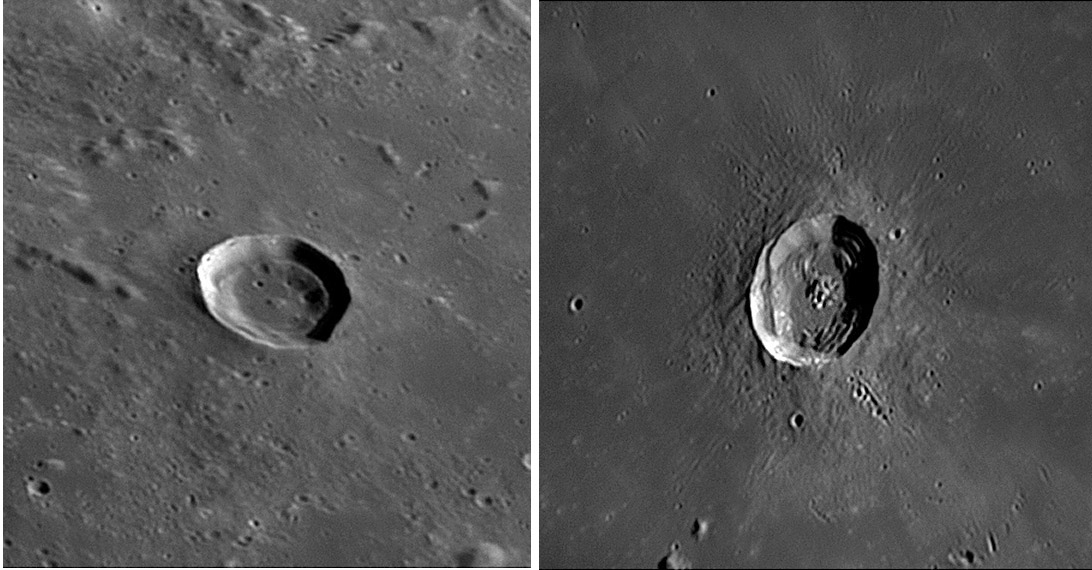October 14, 2018
27 & 28
Originally published July 31, 2009

images by Damian Peach
Crater morphology depends strongly on crater diameter. Craters smaller than about 15 km have simple bowl shapes, and ones larger than about 30 km have terraces, central peaks and broad flat floors. In between is a transition zone with rim scallops marking where individual wall masses collapsed onto the floor, often surrounding small hills in the crater center. Back in the early 1970's Leif Andersson and I found prototype craters to represent each of these types: simple Biot, transitional Triesnecker and complex Tycho. But not all craters exactly follow this sequence. Euler, the 27 km wide crater on the right, is a slightly small example of a full complex status. The floor is flat, the central peaks are significant mountains, and there are definite terraces on the near wall. But the edges of the floor are ringed with small debris mounds from the walls (one reaches the central peaks), and at top left the rim makes an odd split with part going diagonally toward the floor. Euler is still in the transition zone. Twenty-eight km wide Grove (left) is clearly not a Tycho type crater, but it is unusual looking for a transitional one. It has a continuos wreath-like slump mass that is remarkably regular and coherent. A knobby small rounded hill marks the middle of its flat floor. Why should two craters of essentially equal diameter and depth look so different? I can't say for sure, but it probably has to do with the nature of the pre-existing terrain that these craters formed on. In the 1970s my colleague Mark Cintala, Jim Head and I discovered that the transition from simple to complex morphology occurred at smaller diameters for craters formed on maria than on highlands. We proposed that the stronger and more coherent mare rocks, compared to the fragmental megaregolith of the highlands, facilitated coherent rebound to form peaks and fractures to make terraces. The fragmental nature of the highlands led to more chaotic wall slumps and smaller, more jumbled peaks in highland craters. Euler formed in thick mare lavas and Groves penetrated thin lavas on top of highly fractured basin ejecta.
Chuck Wood
Technical Details
Euler: May 28th, 2007. C14 with SKYnyx 2.0M, Barbados, W.I.
Grove: May 23rd, 2007. C14 with SKYnyx 2.0M, Barbados, W.I.
Related Links
Rükl plate 14 & 20
Damian's new gallery of lunar images.
Yesterday's LPOD: I'll Drink To That
Tomorrow's LPOD: What is Undarum?
COMMENTS?
Register, Log in, and join in the comments.



